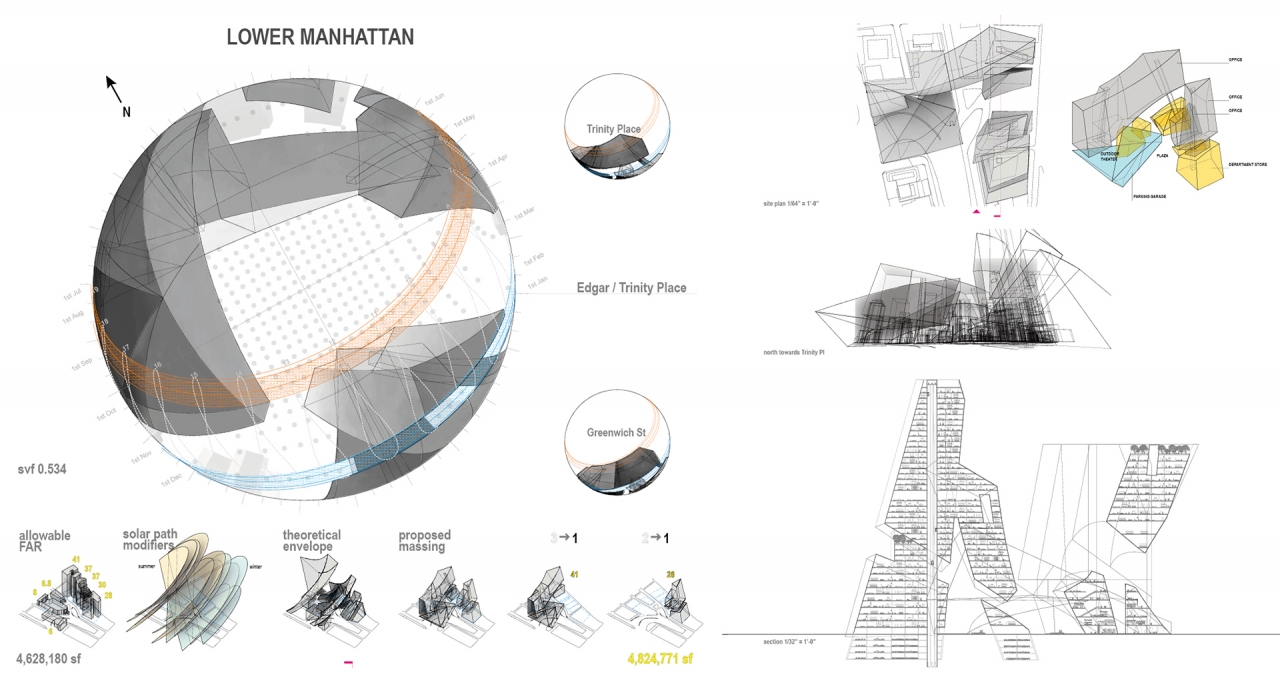Christine Chang
M.Arch Thesis Spring 2011
Faculty Advisor: Paul Lewis
Project Title: “Sky View Property”
Property has traditionally been mapped out through the orthographic projection and understood as a set of values extracted from the ground plane. Governed by its legal envelope and inheriting the plan-based notion of property, architecture has struggled to escape the default extrusion of parcel footprints. This convention of parcel extrusion is most apparent within the grid of Manhattan. While 20th century technology allowed for the emergence of novel urban forms (ie. the skyscraper), suggesting the liberation of property from the ground, zoning regulations continued to reiterate orthographic metrics by confining the building envelope to operate within the metrical absolutes of FAR and the sky exposure plane, reducing architecture to occupy closed-off, singular, autonomous frames.
Taking the NYC Zoning Resolution as both legal code and one of the most radical design projects in the last century, this thesis proposes a zoning resolution that recasts property distribution as an exchange between ground and sky. By replacing the sky exposure plane with a hemispherical â sky-view envelope,â the sky, conventionally dismissed as a neutral, residual void without tangible values, becomes an optical terrain exerting its own set of differential pressures/values.
In this revised ordinance, corner lot properties are adopted as the test case to speculate a performative urban skyline that responds to the mapped pressures from the sky vault. At the locus of intersection and sky, both forgotten voids within the urban grid, the thesis envisions a new metric for urban density that allows private properties to organize within a system of collective and relational limits, while maintaining the public good of access to light and air. What emerges from the zoning resolution is a series of building envelope typologies (tested in four neighborhoods and generated from anamorphic operations) that reinvigorate the urban intersection as a moment of formal and optical aberrations. The intersection, rather than being subsumed
into the neutral grid, becomes the precise moment where Manhattan's grid bias is not only revealed but exploited to create new spatial and programmatic opportunities, where value exchanges between ground/sky/corner converge to produce new types of frontality and material effects.







